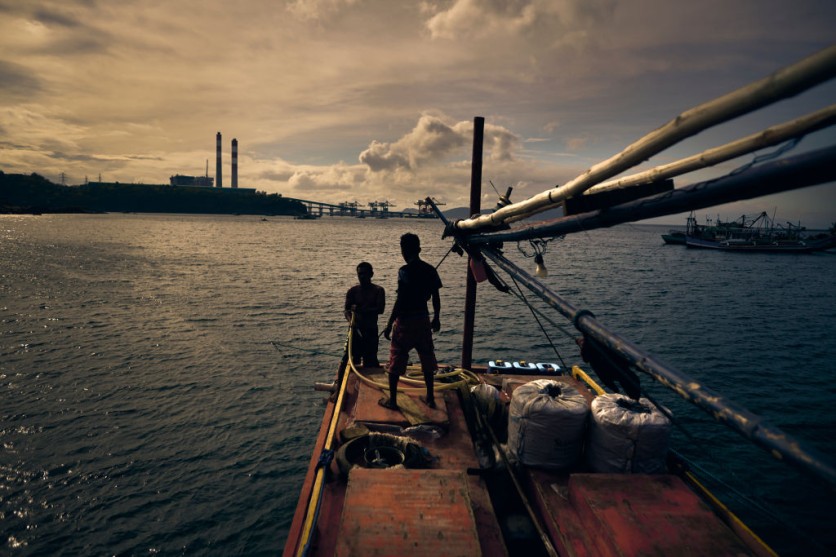According to Ksiazek, the Navy and DIU launched the research two years ago. The University of Maryland is reportedly using artificial intelligence (AI) to help sailors detect killer rogue sea waves in advance, which continue to threaten the lives of people and ships.
Balakumar Balachandran and Thomas Breunung employ a neural network, an artificial intelligence technology, in their new study. The researchers trained their neural network on vast volumes of data collected from floating sensors (buoys) near coastlines.
The collection includes 14 million measurements, each lasting 30 minutes, that recorded wave heights from 172 buoys dispersed throughout the coastlines of the United States and the Pacific Islands.
The network was meticulously trained to distinguish between regular ocean waves and those that precede rogue waves. It learned to identify patterns that signal the imminent arrival of a rogue wave.
The researchers tested the tool's capabilities using a second set of 40,000 sea surface elevation observations from the same buoys.

(Photo : Jes Aznar/Getty Images)
Filipino fishermen prepare their boat to sail to the West Philippine Sea despite harassment by Chinese militia and coast guard in the disputed waters on May 18, 2021 in Mariveles, Bataan, west of Luzon in the Philippines.
The results of the testing were impressive. The method accurately predicted the development of 75% of rogue waves one minute in advance and 73% of erratic waves five minutes ahead, demonstrating the tool's effectiveness.
Furthermore, the researchers used the technique on two new buoys that were not part of the training set. And it was still able to anticipate rogue waves with excellent accuracy. This implies that the program can forecast them even in new maritime regions.
Mariners have feared rogue waves, often strong storm waves, for decades. The waves are strong enough to collapse or wreck a ship.
NOAA defines rogue waves as more than double the size of the surrounding waves. These waves are typically seen in the open ocean and oceans.
AI Against the Seas
The study is the latest example of how AI continues to be applied throughout the vast seas. Most recently, the US Navy was looking for AI-powered drones to automatically detect enemy threats after a series of successful tests proved that they are twice as fast in detecting underwater mines.
These mines, often difficult to detect due to their stealthy nature, pose a significant threat to naval operations. The use of AI in this context has the potential to revolutionize underwater mine detection and significantly enhance maritime safety.
According to Alex Campbell, Navy service lead for the Pentagon's Defense Innovation Unit, which is based in California and aims to incorporate commercial technology into the armed services, the effort has cut the time required to search for underwater bombs on the ocean floor in half.
Campbell further states that the Navy is announcing other manufacturing contracts to expand the technology's use in underwater drones and examine its potential for detecting enemy ships, planes, and other threats.
According to Nick Ksiazek, a US Marine Corps major who manages the project and works in DIU's AI portfolio, the Navy has started testing machine learning algorithms that employ sonar sensors to detect underwater features and navigate the ocean floor.
According to Ksiazek, the Navy and DIU launched the research two years ago.
Sailing crews get photos to detect hostile waterways or commercial maritime zones. According to Campbell, the Navy has decreased its crew size by ten people on operations, which was reduced to two days owing to AI techniques.
AI's Rapid Sea Training
Successful AI models usually require rapid retraining to adapt to new settings. Ksiasek believes that identifying between items on a sandy ocean floor, a rocky ocean floor, and a trash-covered seabed necessitates separate identification approaches. He stated that the underwater drones have already been deployed and have participated in drills in the Indo-Pacific region.
Furthermore, the Navy is upgrading its AI models more quickly so that while the drone's surface is on the water, it can give commands to the drones remotely rather than having to remove them from the water entirely. Previously, the implementation of such models took six months.
Related Article: Kilimo Innovates Water Conservation in Agriculture, Paying Farmers to Save Water

ⓒ 2025 TECHTIMES.com All rights reserved. Do not reproduce without permission.




